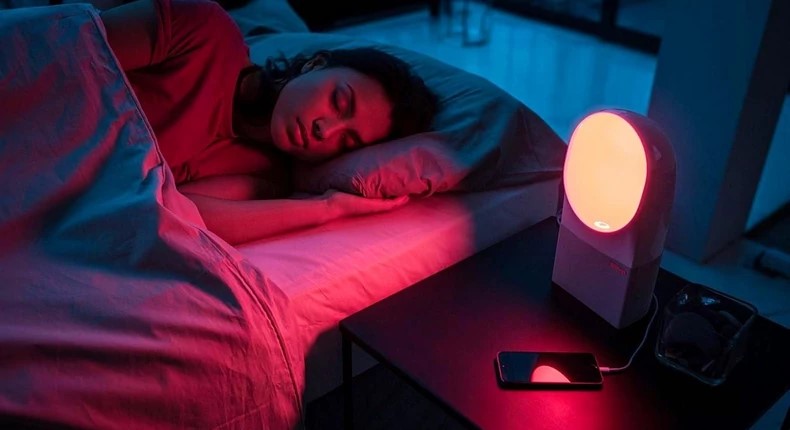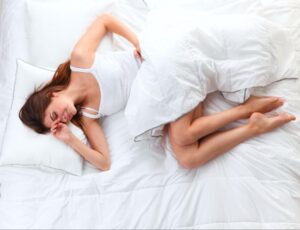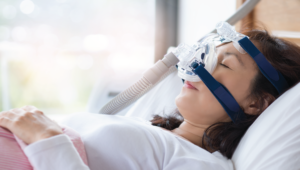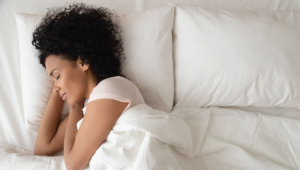Getting a good night’s sleep can be Significantly influenced by the environment we create in our bedrooms. Among various factors, the light colors we expose ourselves to in the evening can directly impact our ability to fall asleep and the quality of our rest. Research has shown that different colors of light affect the production of melatonin, a hormone responsible for regulating our sleep patterns.
One color that has been found to promote sleep is red light. This is because red light encourages the production of melatonin, which in turn helps us feel mentally and physically relaxed as we drift off to sleep. On the other hand, blue light has been shown to suppress melatonin production, making it more difficult to fall asleep.
The Importance of Light for Sleep
Light plays a crucial role in regulating our sleep-wake cycle. Our internal clock, the circadian rhythm, is influenced by the daily patterns of light and darkness. When properly adjusted, our circadian rhythm helps ensure a good night’s sleep and overall well-being.
Exposure to light helps set our internal clock by stimulating or suppressing the production of melatonin, a hormone involved in sleep regulation. During the day, bright light exposure helps keep us alert, while low light signals our bodies to produce more melatonin, preparing us for sleep.
For a better night’s sleep, it’s essential to consider the types and colors of light in our environment. Warmer light colors, such as red, promote melatonin production, whereas cooler light colors may have the opposite effect. By being mindful of the lighting in our bedrooms and homes, we can create ideal conditions for sleep.
Several strategies can help optimize light exposure for sleep. For example, maintaining a consistent bedtime routine that includes dimming the lights can reinforce our sleep-wake cycle.
In conclusion, understanding the relationship between light and sleep can significantly impact our overall health and well-being. By being mindful of our light exposure throughout the day and adjusting our environments accordingly, we can substantially improve the quality of our sleep and enhance our daily lives.
Colors and Sleep Quality
Blue Light: The Sleep Disruptor
Blue light has been found to disrupt sleep by suppressing the production of melatonin, the hormone responsible for regulating sleep-wake cycles. Exposure to blue light, especially from screens, can make falling asleep more difficult.
Red Light: Enhancing Sleep and Relaxation
On the other hand, red light encourages the brain to produce melatonin, helping you relax and fall asleep. In addition, red light has the least impact on our circadian rhythm, making it an ideal color for enhancing sleep quality.
Other Colors that Promote Sleep
- Green light: Although not as effective as red, green light can also promote relaxation and calmness, benefiting sleep.
- Yellow light: Certain studies indicate that yellow light can be beneficial in reducing sleeplessness in both adults and children, as it has a lower impact on melatonin production than blue light.
- Pink light: Similar to green and yellow, pink light may provide a calming effect conducive to sleep.
Incorporating the right colors and light sources into the bedroom environment can greatly impact sleep quality. Be mindful of both color psychology and light intensity when creating a sleep-friendly atmosphere.
Creating a Sleep-Enhancing Bedroom Environment
Choosing the Right Light Color
Selecting the appropriate light color can significantly affect sleep quality. For example, opting
for warmer hues, like yellow or orange-toned lights, can promote relaxation and help the body prepare for rest. On the other hand, cool-toned lights, such as blue or white, might interfere with sleep by suppressing melatonin production.
Controlling Light Brightness and Temperature
Managing both brightness and color temperature is essential for a sleep-friendly environment. Dim light settings can help the mind wind down, while excessively bright lights, especially from screens, can hinder the sleep process. Warm color temperatures are also preferable, as they encourage a soothing atmosphere conducive to rest.
Bedroom Color Scheme and Design
Creating a calming bedroom color scheme and design can impact sleep quality. Opt for incorporating soft, muted colors will promote serenity and comfort. For example, an accent wall with a peaceful hue can serve as a focal point for relaxation. Additionally,decorating with plants and other natural elements can enhance the overall atmosphere, making it a haven for restful sleep.
Electronic Devices and Sleep
The Effect of Screens on Sleep Patterns
Electronic devices such as phones and tablets emit blue light that can disrupt sleep. Exposure to blue light in the hours leading up to bedtime can hinder sleep by suppressing the body’s release of melatonin, a hormone that makes us feel drowsy.
LED lights and daylight also emit blue light, impacting our circadian rhythms and overall sleep quality. This interference can make it harder for individuals to fall asleep and maintain a restful slumber.
Tips for Reducing Screen Time Before Bed
To improve sleep quality, limiting screen time 2-3 hours before bed is essential.
Instead, engage in relaxing activities such as reading a physical book, bathing, or
practicing meditation.
Consider using blue light blocking glasses if you must use devices before bed. These glasses help filter out the blue light, reducing its impact on your sleep.
Dim the brightness on your devices or switch to night mode, which changes the background from white to black. Opt for warm-colored night lights to create a relaxing bedroom environment that promotes better sleep.
Additional Benefits of Colored Light Therapy
Apart from improving sleep, colored light therapy offers other benefits. Red light therapy, for instance, has been observed to minimize anxiety and depression symptoms.
Amber and warm light create a calming effect, helping people relax. This can lower stress levels and improve overall emotional well-being.
Increased energy is another advantage, particularly when using light therapy for conditions like Seasonal Affective Disorder (SAD). It may help alleviate fatigue and boost daytime alertness.
Pain management can also be addressed through light therapy. Research has shown the potential to relieve chronic and acute pain, contributing to a better quality of life.
Lastly, colored light therapy could influence heart rate. It has been observed that specific light colors can have physiological effects, such as lowering blood pressure and heart rate responses to stress.
Remember to use light therapy responsibly and consult a professional if needed.
Tips for Improving Your Sleep Routine
Creating an ideal sleep environment is crucial for a good night’s rest. Choosing the right color of light can help promote calmness and tranquility. Soothing colors like yellow may be beneficial.
Establishing a consistent sleep routine also helps. Going to bed at the same time every day can regulate the body’s internal sleep cycle. A bedtime routine with calming activities, like reading or low-impact stretching, can further improve sleep quality.
Another tip is to minimize stress before bedtime. Engaging in relaxation techniques such as deep breathing exercises or meditation can help lower stress levels and prepare the mind for sleep.
Reducing exposure to bright light close to bedtime is essential. Lowering the lights helps increase the body’s production of melatonin, a hormone that promotes sleep.
For those struggling with sleep disorders, it’s important to consult a professional. This can help diagnose any underlying issues and provide appropriate treatment options for a better sleep experience.
Lastly, making the bedroom a sanctuary for sleep, with comfortable bedding and a clutter-free environment, contributes to creating a sense of peace, security, and relaxation conducive to a good night’s rest.



